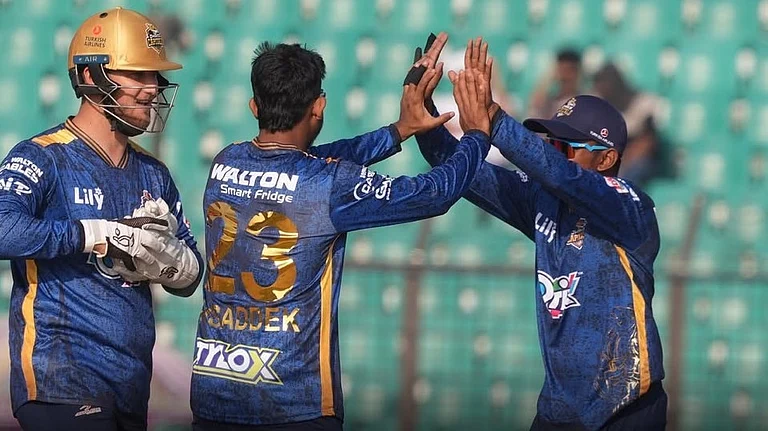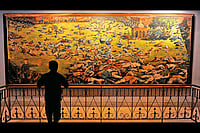I first heard about Dara Shukoh (1615-1659) from my mother. She was fascinated by his brilliance, his poetry. She was also mesmerised by the tragedy that befell him. I wondered why Dara was an enigma and a hero for many others of her generation.
Supriya Gandhi probes that very question, unraveling the entwined histories and memories of Dara. Through scholarly reading, Gandhi retrieves Dara as a historical personality with a political role. The relationship between Aurangzeb and Dara is a crucial discourse in our history, but Gandhi’s meticulous analysis shifts the focus away from Dara’s tragic end to his political ambitions and intellectual journey.
Gandhi captures the interconnected trajectories of Shah Jahan, Dara Shukoh and Jahanara. Dara’s spiritual world was shaped by Shah Jahan and Jahanara, his eldest sister, who remained his treasured confidante. Brother and sister were both inspired by Sufi literature. Jahanara was also peacemaker, who arranged Dara’s meeting with Aurangzeb in the face of their acrimonious relationship. At 21, she was one of the wealthiest persons in the empire and as a single woman she was able to etch out a powerful role at her father’s court.
Gandhi’s engagement with the elusive prince Dara is through recourse to a vibrant context of diverse voices and frameworks. This is not easy, enmeshed as Dara was in different timescapes. Gandhi thus distances herself from the nationalist-secular readings of Dara and so offers a contrasting view from the way Aurangzeb and Dara are interpreted now. In her astute analysis, Dara and Aurangzeb are not polar opposites. Gandhi’s micro-histories break the mainstream storyline and introduce us to the messiness of the plot, which goes beyond the binary of villain and hero in Mughal history.
This is not a plain biography. Dara’s story opens the hidden recesses and intricacies of Mughal polity. Gandhi also delves into Dara’s inner life. In his dream, Dara saw the Hindu sage Vasishtha along with legendary Ram: “With the utmost affection, Ram took me into his arms”, he said. Yet, the spiritual Dara was also a political actor celebrated as a future ‘Shah Buland Iqbal’ (Emperor of Exalted Fortune). Gandhi reveals that Dara straddled the worlds of religion and politics. And he drew upon the essential elements of political authority—asceticism and piety—features that Mughal rulers had consistently employed. In tune with his forebears Akbar and Jahangir, Dara’s idea of sovereignty was an amalgam of Greco-Persian, Central Asian and Indic traditions.
Dara’s comparative study of Hinduism and Islam and his translation of the Upanishads into Persian form his legacy, but he was not alone in advocating the ‘universal font of monotheism’. The excavation of Indic sources was important; several writers and translators saw them as critical repositories of an ‘esoteric wisdom’. This interest was nurtured by Mughal rulers too. Gandhi tells us clearly that Dara was not a liberal, nor did he promote interfaith harmony in the modern sense. He reconfigured a notion of religious universalism while remaining a devout Muslim.
Gandhi poses new questions about the many Daras: philosopher prince, Sufi-poet, seasoned warrior, military commander, administrator and heir-apparent. As his life, in Gandhi’s analysis, gets grounded within an open-ended institution of Mughal kingship, his tragic end doesn’t overwhelm us. Fratricide was permitted within Mughal codes and Dara’s execution by Aurangzeb, Gandhi points out, was no exception.
Supriya Gandhi’s book recovers lost stories of Dara and his times which are silenced by modern nationalist constructions. Dara remains a contested figure and evokes alternative reactions that are incorporated into opposing political frameworks. Yet the question why he continues to be an enigma in popular memory awaits an answer.
Written in an elegant narrative style, The Emperor Who Never Was disentangles the diverse strands of a complex narrative that shapes the fractured history of South Asia.
(Nonica Datta teaches History at JNU).























